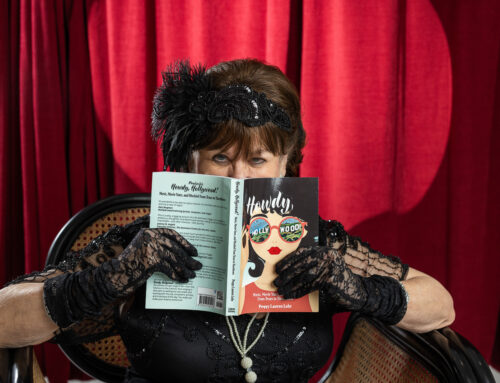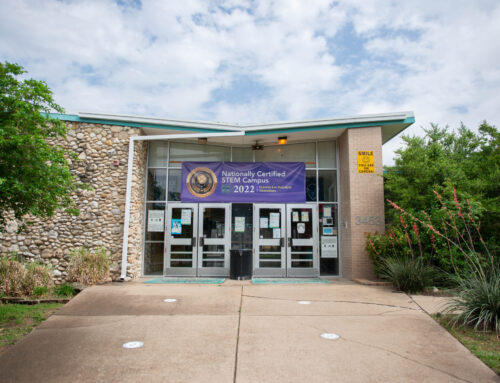
Photography by Kathy Tran
Miller Kerr vividly remembers the first time she fell in love with dancing.
Playing Just Dance with friends to your favorite song is a core memory for many kids. But unlike most kids, Kerr was dancing between four hospital walls.
In 2013, 10-year-old Kerr’s life took an unexpected spin while playing basketball with her best friend. One slight movement to her knee caused her immediate pain. A seemingly minor injury that usually bruises and heals within a few days, continued for painful weeks.
After several doctor visits and what felt like over 1,000 MRIs and X-rays, they received the official diagnosis.
Kerr and her family found out she had CRPS, Complex Regional Pain Syndrome, a rare nerve disorder that causes the body to send intense pain signals that can’t be shut off.
“You know when you touch a hot stove or a curling iron and your hand burns, but then the pain would go away after 10 minutes?” Kerr says. “Well for me, my pain levels would shoot up. They never went back down.”
Ultimately, the disease spread to her right leg, causing her to lose the ability to move much. Kerr spent a portion of her childhood between recovery programs, physical therapy and other hospitals.
“I was even kicked out of one hospital because they told me I was lying, that I was making it all up,” Kerr says.
One doctor visit in Dallas led to a discovery.
“[The doctor] knew immediately once I walked into the room,” Kerr says. “My leg was all purple and discolored.”
Although the doctor in Dallas couldn’t personally treat Kerr, he referred them to Cleveland Clinic, one of the three hospitals in the country that had a rehabilitation program for children of Kerr’s age, but with a long waitlist.
“My mom called them and said, ‘If she doesn’t go, she will never walk again.’” Kerr says.
There, Kerr learned there wasn’t a cure.
There were, however, a handful of coping strategies including physical therapy, occupational therapy, psychologist appointments and other extracurricular classes in between. The full program lasted three weeks, but Kerr spent six weeks there in spring 2014.
“It was hard to accept that I would have to teach myself how to walk again to get better and it’s going to cause a lot of pain,” Kerr says. “The only problem was they told my parents and myself after I left to never talk about [the pain].”
According to the doctors at Cleveland Clinic, talking or thinking about the pain would only cause more pain. From the moment Kerr left the hospital at 11 years old to when she was a junior in high school, her household hardly talked about what happened.
“I was suffering by myself. I would be in my bed late at night just crying and wanting to talk to someone about this and wanting someone else to be there for me,” Kerr says. “I would confide in my closer friends at the time, but they’re so young and have no idea what it means. How do you expect a high schooler to understand a disease that not many doctors can’t even understand?”
After a while, Kerr returned to sports to regain muscle in her legs per her physical therapist’s suggestion. Before the accident, Kerr was into a lot of sports. But after one attempt on the green, she didn’t feel that same connection anymore. Before ruling out other sports, she remembered how dancing in the hospital made her feel.
“Dance was something that always intrigues me,” Kerr says. “I think because I couldn’t talk to anyone at the time. It was kind of like my own therapy. And it was an escape from the outside world of pain and loneliness.”
Her determination led through the trials of Ursuline Academy drill teams. After graduation, she became captain of the Rangerettes while at Kilgore College.
Through practice though, she would feel the familiar bouts of burning pain. She spent the summer before college in a dance camp to prepare for tryouts. Kerr knew dancing on a college team would double her pain and practice would be more demanding than high school. After three to four weeks of tryouts, she could barely walk. It was getting harder to keep her condition a secret.
“In October, I opened up to my classmates and teammates about [CRPS],” Kerr says. “They were the first big group that I told. They were so accepting, and understanding and my favorite part was they asked questions to understand it more. Those girls are the people that gave me the confidence to share my story.”
From that moment, Kerr felt the newfound courage to tell more people.
Kerr became an advocate for CRPS with her nonprofit, Burning Hope. Through the nonprofit, she had the opportunity to share her story with others who also suffer from CRPS and to raise awareness about the condition to others.
The name came from a long list of other potentials. From the start of the idea process, Kerr knew she would include the word ‘hope.’ The word ‘burning’ stems from how CRPS can sometimes feel like fire coursing inside.
“If you have burning pain, you might as well have some burning hope,” Kerr jokes.
Proceeds from the nonprofit are fed into a bigger nonprofit, Reflex Sympathetic Dystrophy Syndrome Association (RSDSA), which will use the proceeds for research.
Initiatives like the Walk Strong fundraiser and The Blanket Project became pillars of her mission. Her first walk was a success with over 107 walkers and raised over $13,500.
The first year of The Blanket Project, blankets were donated to the Cleveland Clinic, the same hospital she stayed at nine years ago. She told staff members how being told not to share her experience negatively affected her and her family.
“They changed their program and now they keep in contact with their patients up to three months after they leave,” Kerr says.
In 2023, Netflix released the documentary “Take Care of Maya” furthering awareness around CRPS, an otherwise silent conversation. While there are some minor differences between Maya and Kerr’s story, she still feels connected to the documentary. One difference was Maya was diagnosed in 2016, three years after Kerr.
“It’s crazy to see how no progress was made with CRPS within the medical industry. With the documentary, word got out more and a lot of awareness was spreading,” she says. “So many people would text me and be like, ‘This is what you have right?’ The movie is hard to watch, especially from someone who has it, but I think what it’s doing for the CRPS community is great.”
The third Walk Strong was this April. Each year, she plans to add to her nonprofit with the future goal of a gala. Kerr transferred from Kilgore to Texas Christian University where she wants to be a motivational speaker to highlight other people’s stories of hope and inspiration through podcasts, interviews or talk shows.
“Beyond CRPS, I think there is a lot of darkness in the world just like there’s a lot of darkness with CRPS,” Kerr says. “The best way of shedding light is not just showcase my story, but showcase others.”






